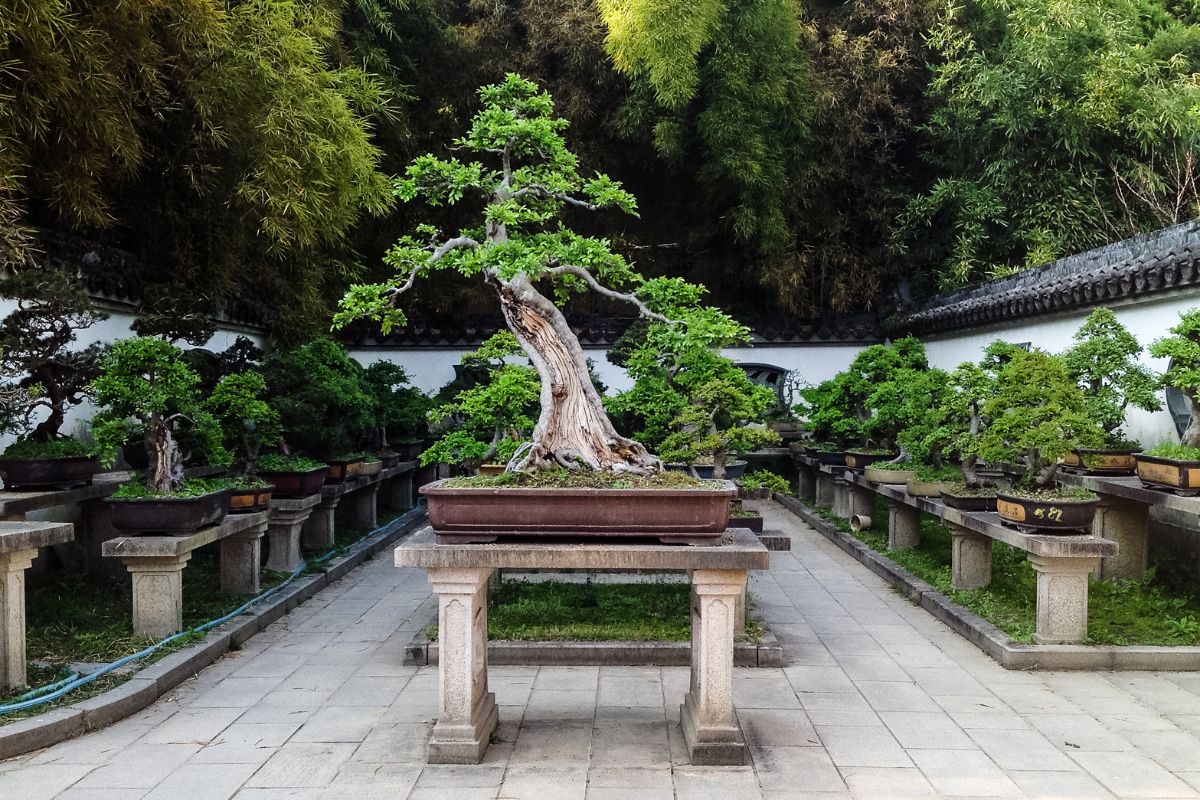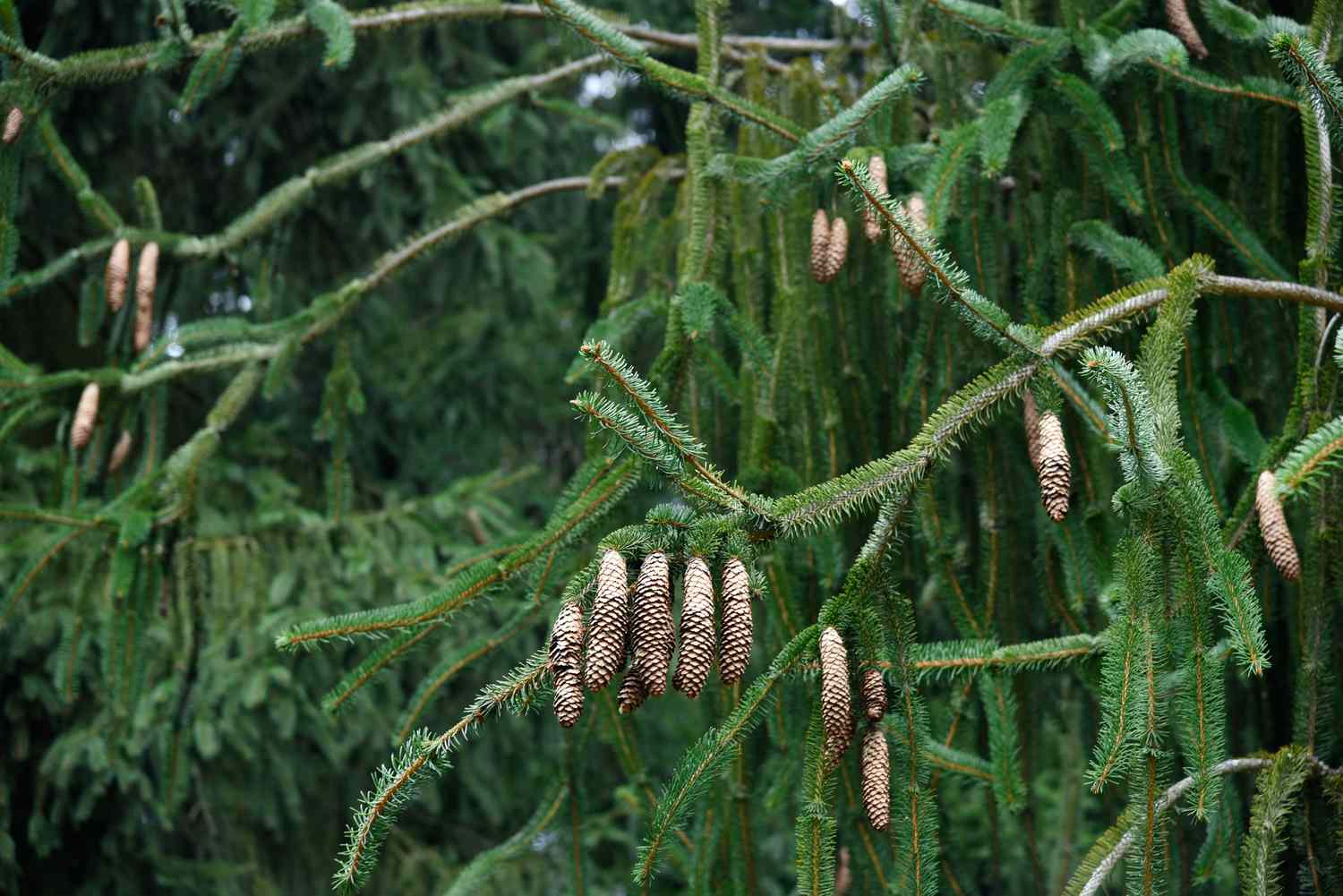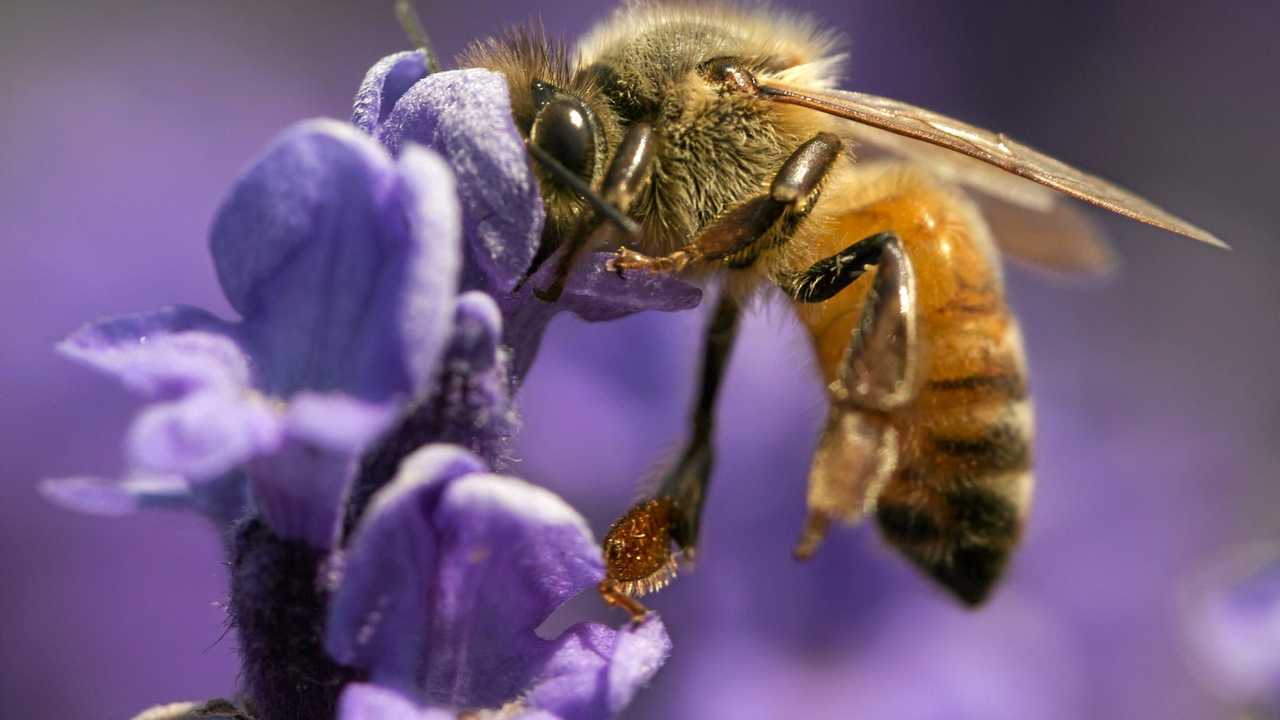Home>Gardening News and Trends>Latest News>How Do Living Things Like Insects Use Surface Tension


Latest News
How Do Living Things Like Insects Use Surface Tension
Modified: January 22, 2024
Discover the intriguing ways insects capitalize on surface tension for survival. Stay updated with the latest news on the secrets of living organisms.
(Many of the links in this article redirect to a specific reviewed product. Your purchase of these products through affiliate links helps to generate commission for Chicagolandgardening.com, at no extra cost. Learn more)
Table of Contents
Introduction
Surface tension is a fascinating phenomenon that is not only found in liquids but also plays a crucial role in the functioning of living organisms. It is the force exerted at the surface of a liquid that causes it to behave like a stretched elastic sheet. This property arises due to the cohesive forces between the molecules of the liquid, which pull the molecules at the surface inward, creating a tension.
In the vast diversity of life on Earth, insects are a remarkable group that have adapted to utilize surface tension in various ways. Insects are highly mobile creatures, capable of traversing different environments with ease. From walking on water to capturing prey, surface tension plays a significant role in their locomotion, feeding, respiratory system, and even reproduction.
This article explores how living things like insects utilize surface tension to their advantage. By examining these fascinating adaptations, we can gain a deeper appreciation for the wonders of nature and the creative solutions that have evolved over millions of years.
Throughout the rest of this article, we will delve into the specific ways in which insects harness the power of surface tension. We will examine how surface tension aids in their locomotion, feeding behaviors, respiratory systems, and reproduction strategies. By the end, you will have a comprehensive understanding of how surface tension influences the lives of these tiny yet remarkable creatures.
Definition of Surface Tension
Surface tension, as mentioned earlier, is the force exerted at the surface of a liquid that gives it an elastic-like behavior. It arises due to the cohesive forces between the molecules of the liquid, which are attracted to each other. This cohesion creates an imbalance of forces at the liquid’s surface, resulting in a net inward pull.
Surface tension can be understood by considering a water droplet. The molecules within the droplet are attracted to each other, causing them to pull inward. This attraction creates a ‘skin’ or surface layer that resists any external forces. It is this surface tension that allows water droplets to form spherical shapes, as the inward forces balance out the outward pressure created by the volume of water.
Surface tension is measured in units of force per unit length, typically Newtons per meter (N/m). The strength of surface tension depends on the type of liquid and the temperature. Liquids with stronger intermolecular forces, such as water, exhibit higher surface tension.
One important concept related to surface tension is the contact angle. When a liquid comes into contact with a solid surface, it forms a droplet with a specific shape. The angle between the tangent line at the point of contact and the solid surface is called the contact angle. The value of the contact angle is influenced by the intermolecular forces between the liquid, the solid, and the surrounding air.
Understanding the fundamental principles of surface tension is essential in comprehending how living organisms, like insects, take advantage of this phenomenon for their various biological functions.
Importance of Surface Tension in Living Things
Surface tension plays a crucial role in the lives of many living organisms, including insects. This phenomenon enables them to perform a range of essential functions and adapt to various environmental conditions. Let’s explore the significance of surface tension in the lives of these remarkable creatures:
1. Locomotion: Insects such as water striders and fishing spiders are well-known for their ability to walk effortlessly on the surface of water. This amazing feat is made possible by the high surface tension of water. The adhesive pads on their legs, combined with the distribution of their body weight, allow them to stay afloat and propel themselves forward without sinking.
2. Feeding: Some insects, like water striders, use surface tension to obtain their food. They detect the ripples created by struggling prey on the water’s surface and quickly dart in to capture them. The high surface tension of water enables these insects to rapidly move across the surface and snatch their prey before it escapes.
3. Respiratory System: Aquatic insects, such as mosquito larvae, have developed unique adaptations to extract oxygen from the surrounding water. They create a small air bubble, known as a plastron, which is held against their bodies by surface tension. This plastron acts as an oxygen reserve, allowing them to respire efficiently while submerged.
4. Reproduction: Some insect species use surface tension in their reproductive strategies. For example, male diving beetles create air bubbles on the water’s surface, which serve as an arena for mating rituals. The female beetles are attracted to these bubbles and lay their eggs within them, providing a safe environment for their offspring.
5. Defense Mechanisms: Certain insects, like water bugs and whirligig beetles, employ surface tension as a defense mechanism. When threatened, they release chemicals that reduce the surface tension of the water around them. This causes a disturbance in the surface, making it difficult for predators to locate and attack them.
The importance of surface tension in the lives of living organisms, particularly insects, cannot be overstated. It enables them to navigate their surroundings, obtain food, respire, reproduce, and protect themselves from harm. These remarkable adaptations highlight the incredible ways in which nature has leveraged the properties of surface tension for the survival and success of these tiny creatures.
Surface Tension and Insect Locomotion
Insects have evolved remarkable adaptations that allow them to defy gravity and traverse across the surfaces of water and other liquids. Surface tension plays a crucial role in enabling these insects to move effortlessly, using strategies like water walking and surface diving.
One of the most well-known examples of surface tension aiding in insect locomotion is seen in water striders. These slender insects are equipped with long, hydrophobic legs that enable them to distribute their weight over a large surface area, minimizing the potential for breaking the surface tension. By gently resting their bodies on the water’s surface, water striders take advantage of the high surface tension of water to stay buoyant.
The hydrophobic nature of their legs, which repel water, reduces the contact area between the insect and the water, further minimizing surface tension disturbance. This allows them to glide across the water without breaking the surface, using their middle and hind legs for propulsion.
Fishing spiders, another example of insects utilizing surface tension for locomotion, have evolved a slightly different strategy. These spiders have the ability to dive into water and hunt for prey beneath the surface. They do so by creating a thin layer of air around their bodies, which is held in place by surface tension.
By trapping air bubbles on their body hairs or spinning a temporary silk web to capture air, fishing spiders can carry a small supply of air with them underwater. This air layer acts as a buoyancy aid and enables the spiders to navigate beneath the surface with ease. Surface tension allows the spiders to maintain the air layer and prevents the water from completely enveloping their bodies.
Other insects, such as pond skaters and water measurers, also utilize surface tension for locomotion. They employ a combination of mechanisms, including their specialized legs and body structures, to distribute their weight and exploit the surface tension of water. By skillfully maneuvering and using their specially adapted appendages, these insects can move swiftly and gracefully across the water’s surface.
The ability of insects to utilize surface tension for locomotion is a remarkable testament to nature’s ingenuity. Through specialized structures and behaviors, these insects have evolved adaptations that allow them to efficiently exploit the properties of surface tension, enabling them to roam and thrive in aquatic environments that would otherwise be inaccessible.
Surface Tension and Insect Feeding
Surface tension plays a crucial role in the feeding behaviors of various insects, enabling them to capture and consume their prey with precision and efficiency. From capturing struggling insects on the water’s surface to harvesting floating particles, insects have evolved ingenious adaptations to take advantage of surface tension.
One remarkable example of surface tension aiding in insect feeding is observed in water striders. These slender insects use their highly sensitive front legs to detect the ripples and vibrations generated by struggling prey on the water’s surface. Upon detection, water striders swiftly move towards the disturbance, relying on the high surface tension of water to allow them to glide across the surface without breaking it.
With their strong and sharp mouthparts, water striders quickly seize their prey from the water’s surface, taking advantage of the prey’s restricted movement due to surface tension. Their ability to move rapidly and accurately on the water enables them to capture small insects, aquatic invertebrates, and even small fish that find themselves confined to the surface.
Another example of surface tension aiding in insect feeding is seen in some species of backswimmers. These insects are adept swimmers that actively hunt for prey beneath the surface of the water. Once they have captured their prey, they ascend back to the surface while being buoyed by the surface tension.
Upon reaching the surface, backswimmers exhibit a remarkable feeding behavior. They turn their bodies upside down and extend their sharp, beak-like mouthparts, piercing the surface tension of the water. Using their mouthparts, backswimmers puncture their prey at the water’s surface and inject enzymes to digest the prey before sucking out its contents.
Certain insects, such as filter-feeding midges and mosquito larvae, also take advantage of surface tension to feed on suspended particles and organic matter. These insects have specialized mouthparts that allow them to filter out small organic particles floating on the water’s surface. By skimming through the surface layers, they can efficiently gather food resources without the need to submerge completely.
The ability of insects to utilize surface tension for feeding highlights the remarkable adaptations that have evolved over time. By capitalizing on the properties of surface tension, insects can locate, capture, and consume their prey in a highly efficient manner, ensuring their survival and contributing to the delicate balance of ecosystems.
Surface Tension and Insect Respiratory System
The respiratory system of insects is a marvel of efficiency, allowing them to obtain the oxygen they need to survive and carry out their various activities. In certain aquatic insects, surface tension plays a vital role in facilitating their respiration, ensuring they can respire efficiently while submerged in water.
One fascinating adaptation is seen in mosquito larvae, which live in aquatic environments. To allow them to breathe underwater, mosquito larvae have evolved a unique structure called a respiratory siphon. The respiratory siphon consists of a slender tube that extends from the larva’s posterior end and reaches above the water’s surface.
Surface tension holds a small air bubble against the tip of the respiratory siphon, acting as a snorkel. The bubble of air is sustained by surface tension, allowing the larva to respire oxygen from the air while the rest of its body remains submerged in water. This ingenious adaptation ensures that mosquito larvae can survive in habitats that lack sufficient oxygen dissolved in the water.
Another notable example is found in certain aquatic beetles, such as whirligig beetles. These beetles have divided compound eyes that allow them to see both above and below the water’s surface simultaneously. To acquire oxygen, whirligig beetles create a thin air chamber beneath their elytra, the hardened wing covers that protect their delicate wings.
Surface tension helps in maintaining this air chamber, ensuring it remains intact and prevents water from entering. By periodically rising to the water’s surface and replenishing the air supply, whirligig beetles are able to respire efficiently while spending a significant amount of their time submerged in water.
Additionally, certain diving beetles utilize surface tension as part of their respiratory strategy. These beetles create air bubbles on the water’s surface using special glandular secretions. The male beetles construct elaborate underwater dwellings and fill them with these air bubbles, creating small air pockets or “diving bells”.
By generating and accumulating these air bubbles, diving beetles are able to respire oxygen from the captured air while submerged. Surface tension helps in maintaining the integrity of these air pockets, ensuring an adequate supply of oxygen for the beetles during their underwater excursions.
The ability of certain insects to exploit surface tension for respiration allows them to thrive in aquatic environments, where dissolved oxygen levels may be limited. These adaptations showcase the incredible diversity of nature’s solutions and highlight the intricate relationship between surface tension and the respiratory systems of these remarkable creatures.
Surface Tension and Insect Reproduction
Insects have evolved fascinating reproductive strategies that often involve utilizing surface tension in unique and remarkable ways. Surface tension plays a significant role in various aspects of insect reproduction, including mate attraction, mate selection, and providing a suitable environment for offspring.
One example of surface tension aiding in insect reproduction is seen in certain species of diving beetles. Male diving beetles construct air bubbles on the water’s surface using specialized secretions. These air bubbles serve as an arena for mating rituals, as the male beetles entice females to join them within these bubbles to mate.
By creating these air pockets, the male diving beetles offer a safe and oxygen-rich environment for mating. Surface tension helps in maintaining the integrity of the air bubble, ensuring that it remains intact and provides a stable space for the mating pair. This adaptation ensures successful reproduction by providing an ideal location for the male and female to come together.
Another interesting example is found in certain aquatic insects, like water bugs and backswimmers, that lay their eggs on the surface of the water. These insects often produce a sticky substance that spreads across the water’s surface, creating a thin, protective film over the eggs.
Surface tension is crucial in maintaining the integrity of this film, as it holds the eggs in place and prevents them from sinking or being swept away. The sticky substance and the property of surface tension ensure that the eggs remain buoyant and are protected from potential predators or adverse environmental conditions.
In addition to surface tension supporting the physical aspects of insect reproduction, it is also involved in mate selection and competition. In certain species of water striders, for example, males use vibrations on the water’s surface to attract females.
By creating ripples on the water, males generate vibrations that can be detected by females, signaling their presence. The surface tension of the water transmits these vibrations efficiently, allowing female water striders to locate potential mates from a distance. The ability to detect and respond to these surface vibrations is crucial for successful mate selection and reproduction.
The utilization of surface tension in insect reproduction showcases the adaptive nature of these tiny organisms. From providing a suitable mating environment to ensuring the survival of offspring, insects have found innovative ways to harness the properties of surface tension in their reproductive strategies.
Conclusion
Surface tension is a fascinating phenomenon that influences the lives of various living organisms, including insects. Insects have evolved remarkable adaptations to leverage the properties of surface tension for their locomotion, feeding behaviors, respiratory systems, and reproduction strategies.
By utilizing surface tension, insects like water striders and fishing spiders can walk on water and capture prey with ease. Aquatic insects, such as mosquito larvae and whirligig beetles, rely on surface tension to respire efficiently while submerged in water. Certain insects use surface tension to create air pockets for mating rituals, while others rely on it for protecting their eggs on the water’s surface.
The ability of insects to take advantage of surface tension highlights nature’s ingenuity and the incredible diversity of adaptations within the insect world. These adaptations have allowed insects to thrive in various habitats and optimize their survival strategies.
Understanding the role of surface tension in the lives of insects not only deepens our appreciation for their fascinating adaptations but also offers insights into the interconnectedness between physics, biology, and the natural world. It serves as a reminder that even the smallest details in nature can have profound impacts on the lives and behaviors of organisms.
As we continue to explore and study the wonders of nature, uncovering the intricate relationships between surface tension and insect biology will undoubtedly lead to further insights and discoveries. The remarkable adaptations and strategies employed by insects highlight the extent of nature’s creativity and the extraordinary ways in which organisms have evolved to thrive in their environments.
Surface tension is just one of many examples of the intricate and complex interactions between living organisms and their physical surroundings, showcasing the beauty and brilliance of the natural world we inhabit.









